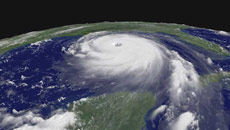Humans colonising the moon or even a distant asteroid in near future is fine but how would they communicate with friends and families on earth, perform large data transfers and enjoy high-definition video streaming?
This question may well find an answer in a new data communication technology that can provide space dwellers a much-needed connectivity to watch their favourite TV show or cricket match.
A team of researchers from the Massachusetts Institute of Technology's (MIT) Lincoln Laboratory and NASA have demonstrated for the first time a “broadband wireless connection” to the moon.
The team is now all set to present the first comprehensive overview of the on-orbit performance of their record-shattering laser-based communication uplink between moon and earth.
“This will be the first time that we present both the implementation overview and how well it actually worked. The on-orbit performance was excellent and close to what we had predicted, giving us confidence that we have a good understanding of the underlying physics,” explained Mark Stevens from MIT's Lincoln Laboratory.
The researchers would present their findings at 'CLEO: 2014', being held in San Jose, California, June 8-13.
The team made history last year when their Lunar Laser Communication Demonstration (LLCD) transmitted data over the 384,633 km between the moon and earth at a download rate of 622 megabits per second, faster than any radio frequency (RF) system.
They also transmitted data from the earth to the moon at 19.44 megabits per second - a factor of 4,800 times faster than the best RF uplink ever used.
Communicating at high data rates from earth to moon with laser beams is challenging because of the 400,000 kms distance spreading out the light beam.
“It is doubly difficult going through the atmosphere, because turbulence can bend light - causing rapid fading or dropouts of the signal at the receiver,” Stevens noted.
A ground terminal at White Sands, New Mexico, uses four separate telescopes to send the uplink signal to the moon.
“The reason for the four telescopes is that each one transmits light through a different column of air that experiences different bending effects from the atmosphere,” Stevens said.
This increases the chance that at least one of the laser beams will interact with the receiver, which is mounted on a satellite orbiting the moon, researchers concluded.





